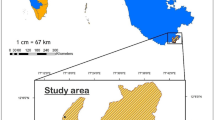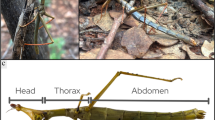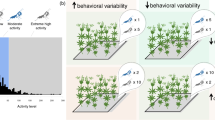Abstract
In this study we examined predation by small felids upon small and medium-sized prey mammals in the central region of the Monte Desert. We analyzed the degree of vulnerability of prey mammals in relation to their habitat use patterns, modes of locomotion and age classes. Medium and small rodents were the predominant preyin the diet of small cats.The most consumed small mammal was Akodon molinae, which inhabits areas of dense cover, while species occurring in open habitats such as Eligmodontia typus were less consumed. Among medium-sized mammals, Galea leucoblephara that depends on patches with high plant cover for refuge was more consumed than Microcavia australis that lives in colonies and displays a complex set of antipredator strategies. Prey selectivity on small rodents showed that E. typus, which uses bipedal locomotion and an erratic escape behaviour, was consumed in greater proportion than its availability. We suggest that although its specialized locomotory mode would diminish predator attacks, its preference for open habitats would increase the probability ofpredator–prey encounter. Consumption of small mammals focuses mostly on adult individuals. However, we found a significant consumption of senile individuals of A. molinae, which points out that vulnerability tends to be high towards the age of maturity in this species.
Similar content being viewed by others
References
Abraham, E., del Valle, H.F., Roig, F., Torres, L., Ares, J.O., Coronato, F., Godagnone, R., 2009. Overview of the geography of the Monte Desert biome (Argentina). J. Arid Environ. 73, 144–153.
Andrews, P., 1990. Owls, Caves and Fossils. Predation, Preservation, and Accumulation of Small Mammal Bones in Caves, with an Analysis of the Pleistocene Cave Faunas from Westbury-sub-Mendip, Somerset, UK. University of Chicago Press, Chicago, 239 pp.
Becker, M.S., 2008. Applying predator–prey theory to evaluate large mammal dynamics: wolf predation in a newly-established multiple-prey system. Ph.D. Thesis. Montana State University, p. 148.
Bellocq, M.I., Kravetz, F.O., 1983. Identificación de especies sexo y edad relativa a partir de restos óseos de roedores de la provincia de Buenos Aires, Argentina. Hist. Nat. 3, 101–112.
Berg, J., 2007. The carnivore assemblage of La Payunia Reserve, Patagonia, Argentina: Dietary niche, prey availability, and selection. Master Thesis. University of Montana, College of Forestry and Conservation.
Bisceglia, S., 2006. Hábitos alimenticios y patrónde selección de micromamíferos por el gato montés (Oncifelis geoffroyi) en el Parque Nacional Lihué Calel, La Pampa. Tesis de Licenciatura, Universidad de Buenos Aires, 54 pp.
Bisceglia, S.B., Pereira, J.A., Teta, P., Quintana, R.D., 2008. Food habits of Geoffroy’s cat (Leopardus geoffroyi) in the central Monte desert of Argentina. J. Arid Environ. 72, 1120–1126.
Bisceglia, S.B.C., Pereira, J.A., Teta, P., Quintana, R.D., 2011. Rodent selection by Geof-froy’s cats in a semi-arid scrubland of central Argentina. J. Arid Environ. 75, 1024–1028.
Bisigato, A.J., Villagra, P.E., Ares, J.O., Rossi, B.E., 2009. Vegetation heterogeneity in Monte Desert ecosystems: a multi-scale approach linking patterns and processes. J. Arid Environ. 73, 182–191.
Bozinovic, F., Medel, R.G., 1988. Body size, energetic and foraging mode of raptors in central Chile. Oecologia 75, 456–458.
Brown, J.H., Lieberman, G., 1973. Resource utilization and coexistence of seed-eating rodents in sand dune habitats. Ecology 54, 788–797.
Brown, J.H., Heske, E.J., 1990. Control of a desert-grassland transition by a keystone rodent guild. Science 250, 1705–1707.
Braun, J.K., Mares, M.A., 1995. Anew genus and species ofPhyllotine rodent (Roden-tia: Muridae: Sigmodontinae: Phyllotini) from South America. J. Mammal. 76, 504–521.
Brown, J.S., 1988. Patch use as an indicator of habitat preference, predation risk, and competition. Behav. Ecol. Sociobiol. 22, 37–47.
Byers, C.R., Steinhorst, R.K., Krausman, P.R., 1984. Clarification of a technique for analysis of utilization-availability data. J. Wildl. Manage. 48, 1050–1053.
Camín, S.R., Madoery, L.A., 1994. Feeding behavior of the tuco-tuco (Ctenomys men-docinus): its modifications according to food availability and the changes in the harvest pattern and consumption. Rev. Chil. Hist. Nat. 67, 257–263.
Campos, C.M., Borghi, C.E., Giannoni, S.M., Mangeaud, A., Tognelli, M.F., 2006. Bark consumption of creosote bush (Larrea cuneifolia) bycuises (Microcavia australis): effect on branch survival and reproduction. Ecol. Austral 16, 1–6.
Carleton, M.D., Musser, G.G., 2005. Order Rodentia. In: Wilson, Don, E., Reeder, D.M. (Eds.), Mammal Species of the World., third ed. The Johns Hopkins University Press, pp. 745–752.
Chame, M., 2003. Terrestrial Mammal Feces: A Morphometric Summary and Description, vol. 98. Mem Inst Osvaldo Cruz, Rio de Janeiro, pp. 71–94.
Contreras, J.R., 1979. Lista faunística preliminar de los vertebrados de la Reserva Ecológica de Ñacuñán. Cuaderno Técnico IADIZA 1, 39–47.
Corbalán, V., Ojeda, R., 2004. Spatial and temporal organisation of small mammal communities in the Monte desert, Argentina. Mammalia 68, 5–14.
Corley, J.C., Fernandez, G., Capurro, A., Novaro, A.J., Funes, M., Travaini, A., 1995. Selection of Cricetine prey by the Culpeo fox in Patagonia: a differential prey vulnerability hypothesis. Mammalia 59, 315–325.
Creel, S., Christianson, D., 2007. Relationships between direct predation and risk effects. Trends Ecol. Evol. 23, 194–201.
Daly, M., Behrends, P.R., Wilson, M.I., Jacobs, L.F., 1992. Behavioural modulation of predation risk: moonlight avoidance and crepuscular compensation in a nocturnal desert rodent, Dipodomys merriami. Anim. Behav. 44, 1–9.
Dunnum, J.L., Salazar-Bravo, J., 2010. Phylogeny, evolution, and systematics of the Galea musteloides complex (Rodentia: Caviidae). J. Mammal. 91, 243–259.
Estrella, H., Boshoven, J., Tognelli, M., 2001. Características del clima regional y de la Reserva de Ñacuñán. In: Claver, S., Roig-Juñent, S. (Eds.), El desierto del Monte: La reserva de Biosfera de Nacun˜án. IADIZA-MAB-UNESCO, Mendoza, Argentina, pp. 25–33.
García Esponda, C.M., Carrera, J.D., Moreira, G.J., Cazón, A.V., De Santis, L.J.M., 2009. Microvertebrados depredados por Leopardus pajeros (Carnivora: Feli-dae) en el sur de la Provincia de Mendoza, Argentina. Mastozool. Neotrop. 16, 455–457.
Giannoni, S.M., Dacar, M., Taraborelli, P., Borghi, C.E., 2001. Seed hoarding by rodents of the Monte Desert, Argentina. Austral Ecol. 26, 259–263.
Halle, S., 1988. Avian predationupon a mixed community of common voles(Microtus arvalis) and wood mice (Apodemus sylvaticus). Oecologia 75, 451–455.
Kittlein, M.J., 1994. Predación por lechuzas sobre poblaciones de roedores. Tesis doctoral. Universidad Nacional de Buenos Aires, p. 43.
Kittlein, M.J., Vassallo, A.I., Busch, C., 2001. Differential predation upon sex and age classes of tuco-tucos (Ctenomys talarum, Rodentia: Octodontidae) by owls. Mamm. Biol. 66, 281–289.
Korschgen, L.J., 1980. Procedimientos para el análisis de los hábitos alimentarios. In: Tarrés, R.R. (Ed.), Manual de Técnicas de Gestión de Vida Silvestre. The Wildlife Society Inc., pp. 119–134.
Kotler, B.P., 1984. Risk of predation and the structure of desert rodent communities. Ecology 65, 689–701.
Kotler, B.P., Brown, J.S., Hasson, O., 1991. Factors affecting gerbil foraging behavior and rates of owl predation. Ecology 72, 2249–2260.
Kotler, B.P., Brown, J.S., Mitchell, W.A., 1994. The role of predation in shaping the behaviour, morphology and community organisation of desert rodents. Aust. J. Zool. 42, 449–466.
Kravetz, F., Busch, M., Percich, R., Manjón, M., Marconi, P., 1981. Ecología de Calomys laucha (Rodentia, Cricetidae) en el departamento de Río Cuarto (Córdoba): II. Criterios para la determinación de edades y crecimiento. Ecología 6, 35–44.
Krebs, C.J., 1966. Demographic changes in fluctuating populations of Microtus cali-fornicus. Ecol. Monogr. 36, 239–273.
Leaver, L., Daly, M., 1998. Effects of food preference on scatter-hoarding by kangaroo rats (Dipodomys merriami). Behaviour 135, 823–832.
Leaver, L.A., Daly, M., 2003. Effect of predation risk on selectivity in heteromyid rodents. Behav. Process. 64, 71–75.
Lima, S.L., 2002. Putting predators back into behavioral predator–prey interactions. Trends Ecol. Evol. 17, 70–75.
Longland, W.S., Jenkins, S.H., 1987. Sex and age affect vulnerability of desert rodents to owl predation. J. Mammal. 68, 746–754.
Lucherini, M., Soler, L., Luengos Vidal, E., 2004. A preliminary revision of knowledge status of felids in Argentina. Mastozool. Neotrop. 11, 7–17.
Maldonado Curti, S.d.P., 1990. Impacto del pastoreo sobre micromamíferos: un estudio comparativo en ambientes semiáridos. Tesis de maestría. Facultad de Ciencias. Universidad de Chile, p. 101.
Manfredi, C., Lucherini, M., Canepuccia, A., Casanave, E., 2004. Geographical variation in the diet of Geoffroy’s cat (Oncifelis geoffroyi) in Pampas grasslandof Argentina. J. Mammal. 85, 1111–1115.
Meri, T., Halonen, M., Mappes, T., Suhonena, J., 2008. Younger bank voles are more vulnerable to avian predation. Can. J. Zool. 86, 1074–1078.
Monge, S., Dacar, M., Roig, V.G., 1994. Comparación de dietas decuises en la Reserva de la Biósfera de Ñacñuanán, Mendoza, Argentina. Vida Silvestre Neotrop. 3, 115–117.
Morello, J., 1958. La provincia fitogeográfica del Mont. Opera Lilloana 2, 1–155. Neu, C., Byers, C., Peek, J., 1974. A technique for analysis of utilization-availability data. J. Wildl. Manage. 38, 541–545.
Ojeda, R.A., Pescetti, E., Monge, S., 1986. Ecología trófica de Athene cunicularia del Monte de Argentina. In: X Congreso Latinoamericano de Zoología, Valparaíso, Chile.
Ojeda, R.A., 1989. Small mammal responses to fire in the Monte Desert, Argentina. J. Mammal. 70, 416–420.
Ojeda, R.A., Tabeni, S., Corbalán, V., 2011. Mammals of the Monte Desert: from regional to local assemblages. J. Mammal. 92 (6).
Palacios, R., 2007. Manual para identificación decarnívoros andinos. Guía decampo, Alianza Gato Andino, Córdoba, Argentina, p. 40.
Pearson, O.P., 1995. Annotated keys for identifying small mammals living in or near Nahuel Huapi National Park or Lanin National Park, Southern Argentina. Mastozool. Neotrop. 2, 99–148.
Pereira, J.A., 2009. Efectos del manejo ganadero y disturbios asociados sobre la ecología trófica y espacial y la demografía del gato montés (Leopardus geoffroyi) en el Desierto del Monte, Argentina. Tesis doctoral. Universidad Nacional de Buenos Aires, p. 196.
Puig, S., Rosi, M.I., Videla, F., Roig, V.G., 1992. Estudio ecológico del roedor subterrá-neo Ctenomys mendocinus en la precordillera de Mendoza, Argentina: densidad poblacional y uso del espacio. Rev. Chil. Hist. Nat. 65, 247–254.
Quintana, C.A., 1996. Diversidad del roedor Microcavia (Caviomorpha, Caviidae) de América del Sur. Mastozool. Neotrop. 3, 63–86.
Reynolds, J., Aebischer, N., 1991. Comparison and quantification ofcarnivore diet by faecal analysis: a critique, with recommendations, based on a study of the Fox Vulpes vulpes. Mammal Rev. 21, 97–122.
Roig, V., 1971. La reserva Forestal de Ñacuñán. Deserta 1, 21–239.
Rosi, M.I., Kravetz, F.O., 1983. Ecología de roedores cricetidos de la Reserva Ecológica de Ñacuñán, Mendoza. In: Libro de resúmenes IX Congreso Latinoamericano de Zoología Arequipa, Perú, octubre de 1983, p. p. 83.
Rosi, M.I., Cona, M.I., Puig, S., Videla, F., Roig, V.G., 1996. Size and structure of burrow systems of the fossorial rodent Ctenomys mendocinus in the piedmont of Mendoza province, Argentina. Mammal. Biol. 6, 352–364.
Rosi, M.I., Cona, M.I., Videla, F., Puig, S., Roig, V.G., 2000. Architecture of Ctenomys mendocinus (Rodentia) burrows from two habitats differing in abundance and complexity of vegetation. Acta Theriol. 45, 491–505.
Rosi, M.I., Cona, M.I., Videla, F., Puig, S., Monge, A., Roig, V.G., 2003. Diet selection by the fossorial rodent Ctenomys mendocinus inhabiting an environment with low food availability (Mendoza, Argentina). Stud. Neotrop. Fauna Environ. 38, 159–166.
Rosi, M.I., Puig, S., Cona, M.I., Videla, F., Mendez, E., Roig, V.G., 2009. Diet of a fossorial rodent (Octodontidae), above-ground food availability, and changes related to cattle grazing in the Central Monte (Argentina). J. Arid Environ. 73, 273–279.
Russell, B.G., Banks, P.B., 2007. Do Australian small mammals respond to native and introduced predator odours? Aust. Ecol. 32, 277–286.
Shenbrot, G.I., Krasnov, B.R., Rogovin, K.A., 1999. Spatial Ecology of Desert Rodent Communities. Springer, New York.
Sih, A., 1985. Evolution, predator avoidance and unsuccessful predation. Am. Nat. 125, 153–157.
Schröpter, R., Klenner-Fringer, B., 1991. Minimizing interspecific competition by different foraging strategies in two North African desert rodents. Acta Theriol. 36, 109–117.
Steppan, S.J., 1995. Revision of the tribe Phyllotini (Rodentia: Sigmodontinae) with a phylogenetic hypothesis for the Sigmodontinae, Fieldiana. Zoology 80, 1–112.
Tabeni, M.S., Ojeda, R.A., 2005. Ecology of the Monte Desert small mammals in disturbed and undisturbed habitats. J. Arid Environ. 63, 244–255.
Tabeni, S., Mastrantonio, L., Ojeda, R.A., 2007. Linking small desert mammal distribution to habitat structure in a protected and grazed landscape of the Monte, Argentina. Acta Oecol. 31, 259–269.
Taraborelli, P., Corbalán, V., Giannoni, S., 2003a. Locomotion and escape modes in rodents of the Monte Desert (Argentina). Ethology 109, 475–485.
Taraborelli, P., Dacar, M., Giannoni, S.M., 2003b. Effect ofplant cover on seed removal by rodentsinthe Monte Desert (Mendoza, Argentina). Austral Ecol. 28, 651–657.
Taraborelli, P., 2007. Factores que afectan en la sociabilidad de Microcavia australis (Rodentia, Caviidae). Doctoral Thesis in Biological Sciences. Facultad de Ciencias Exactas, Físicas y Naturales, Universidad Nacional de Córdoba, Argentina.
Taraborelli, P., 2008. Vigilance and foraging behaviour in a social desert rodent, Microcavia australis (Rodentia Caviidae). Ethol. Ecol. Evol. 20, 245–256.
Taraborelli, P., Borruel, N., Mangeaud, A., 2009. Abilityofmurid rodents tofind buried seeds in the Monte Desert. Ethology 115, 201–209.
Teta, P., Pereira, J., Fracassi, N., Bisceglia, S., Heinonen Fortabat, S., 2009. Micro-mamíferos (Didelphimorphia y Rodentia) del Parque Nacional Lihué Calel, La Pampa, Argentina. Mastozool. Neotrop. 16, 183–198.
Tognelli, M.F., Campos, C.M., Ojeda, R.A., Roig, V.G., 1995. Is Microcavia australis (Rodentia: Caviidae) associated with a particular plant structure in the Monte desert of Argentina? Mammalia 59, 327–333.
Tognelli, M.F., Borghi, C.E., Campos, C.M., 1999. Effect of gnawing by Microcavia aus-tralis (Rodentia, Caviidae)on Geoffroea decorticans (Leguminosae) plants. J. Arid Environ. 41, 79–85.
Tognelli, M.F., Boshoven, J., Stasi, C., 2001. I Relevamiento ecológico. El fuego en la Reserva. In: Claver, S., Roig-Juñent, S. (Eds.), El desierto del Monte: La reserva de Biosfera de Nacuñán. IADIZA-MAB-UNESCO, Mendoza, Argentina, pp. 123–126.
Walker, S.R., Novaro, J.A., Perovic, P., Palacios, R., Donadío, E., Lucherini, M., Pía, M., López, M.S., 2007. Diets of three species of Andean carnivores in high-altitude deserts of Argentina. J. Mammal. 88, 519–525.
Zar, J.H., 1999. Biostatistical Analysis. Prentice Hall, Upper Saddle River, NJ, USA.
Author information
Authors and Affiliations
Corresponding author
Rights and permissions
About this article
Cite this article
Tabeni, S., Marcos, N., Rosi, M.I. et al. Vulnerability of small and medium-sized prey mammals in relation to their habitat preferences, age classes and locomotion types in the temperate Monte Desert, Argentina. Mamm Biol 77, 90–96 (2012). https://doi.org/10.1016/j.mambio.2011.09.006
Received:
Accepted:
Published:
Issue Date:
DOI: https://doi.org/10.1016/j.mambio.2011.09.006




